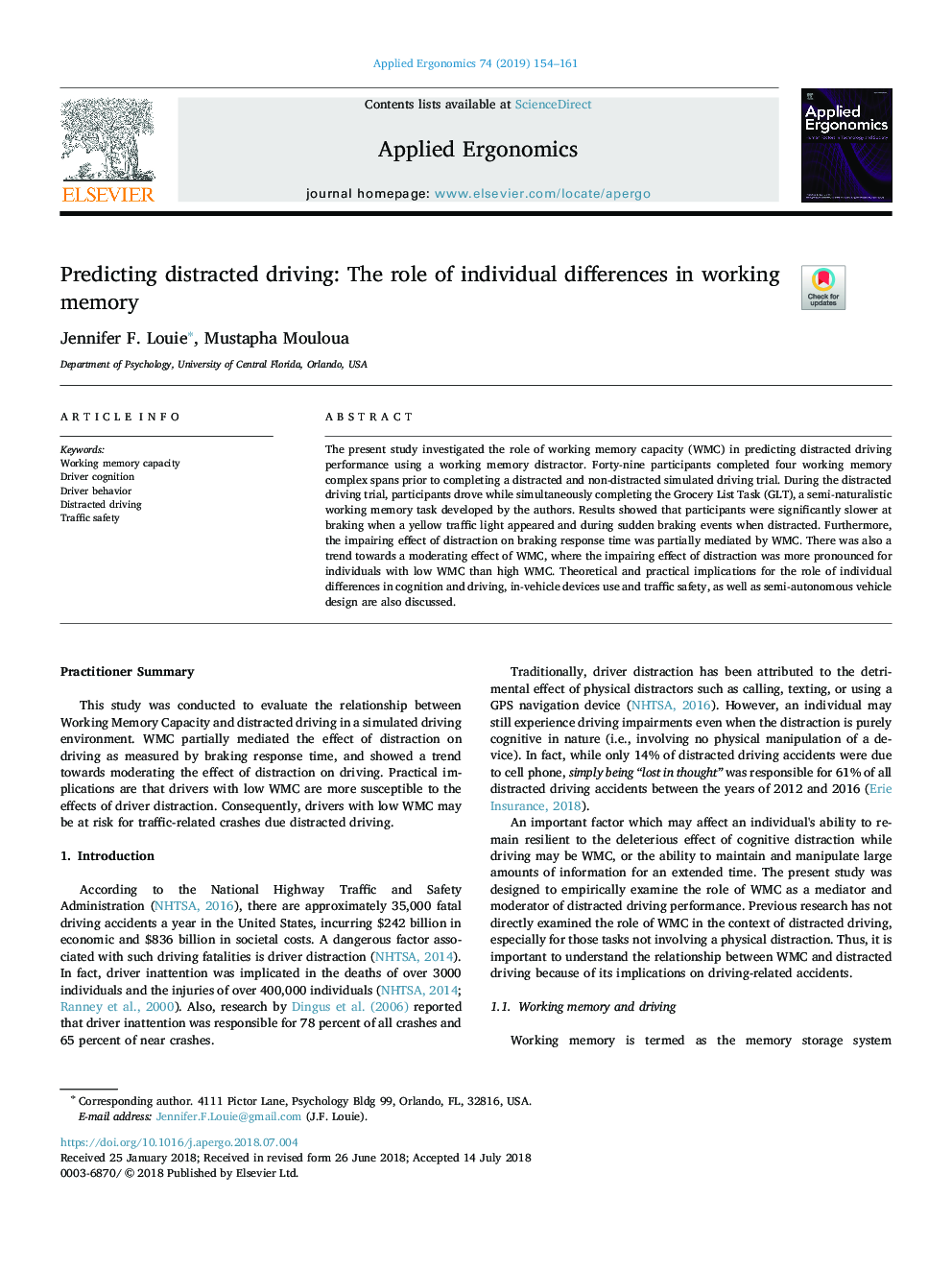| Article ID | Journal | Published Year | Pages | File Type |
|---|---|---|---|---|
| 11002913 | Applied Ergonomics | 2019 | 8 Pages |
Abstract
The present study investigated the role of working memory capacity (WMC) in predicting distracted driving performance using a working memory distractor. Forty-nine participants completed four working memory complex spans prior to completing a distracted and non-distracted simulated driving trial. During the distracted driving trial, participants drove while simultaneously completing the Grocery List Task (GLT), a semi-naturalistic working memory task developed by the authors. Results showed that participants were significantly slower at braking when a yellow traffic light appeared and during sudden braking events when distracted. Furthermore, the impairing effect of distraction on braking response time was partially mediated by WMC. There was also a trend towards a moderating effect of WMC, where the impairing effect of distraction was more pronounced for individuals with low WMC than high WMC. Theoretical and practical implications for the role of individual differences in cognition and driving, in-vehicle devices use and traffic safety, as well as semi-autonomous vehicle design are also discussed.
Related Topics
Physical Sciences and Engineering
Computer Science
Human-Computer Interaction
Authors
Jennifer F. Louie, Mustapha Mouloua,
